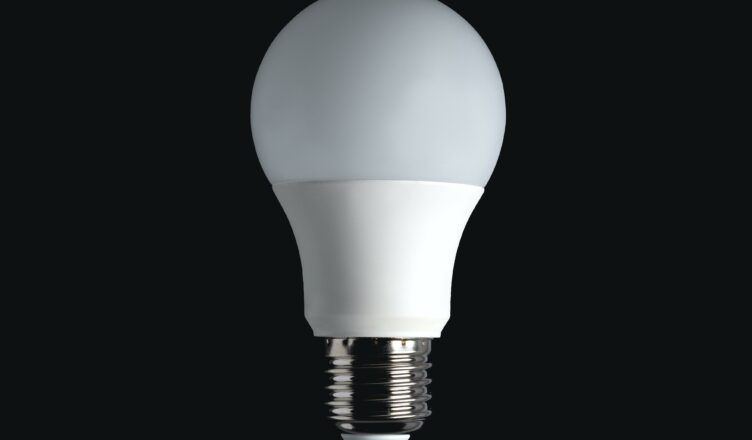History of Light Bulb, More than 150 years back, makers began going after an awe-inspiring idea that would significantly influence how we use imperativeness in our homes and work environments. This advancement changed the way where we plan structures, extended the length of the typical workday, and commenced new associations. It also incited new imperativeness accomplishments – from power plants and electric transmission lines to home machines and electric motors.
Like each and every mind-boggling creation, the light can’t be credited to one fashioner. It was a movement of little upgrades for the considerations of past makers that have incited the lights we use in our homes today.
Splendid BULBS LIGHT THE WAY
Sometime before Thomas Edison ensured – first in 1879 and subsequently a year later in 1880 – and began commercializing his brilliant light, British pioneers were indicating that electric light was possible with the curve light. In 1835, the chief consistent electric light was represented, and for the accompanying 40 years, specialists around the world went after the History of Light Bulb shining light, tinkering with the fiber (the part of the bulb that produces light when warmed by an electrical stream) and the bulb’s atmosphere (whether or not air is vacuumed out of the bulb or it is stacked up with an idle gas to shield the fiber from oxidizing and wearing out). These early bulbs had exceptionally short futures, were too exorbitant to even consider evening consider creating or used an overabundance of essentialness.
Right when Edison and his experts at Menlo Park went onto the lighting scene, they focused on improving the fiber – first testing carbon, by then platinum, before finally returning to carbon fiber. Edison also made various moves up to the light, including making a better vacuum guide than totally dispose of the air from the bulb and working up the Edison screw (what is by and by the standard connection fittings for lights).
Recorded discourse:
One can’t examine the chronicled background of the light without referring to William Sawyer and Albon Man, who got a U.S. patent for the brilliant light, and Joseph Swan, who ensured his light in England. There was chitchat on whether Edison’s light licenses infringed on these other architects’ licenses. Over the long haul, Edison’s U.S. lighting association united with the Thomson-Houston Electric Company – the association making gleaming bulbs under the Sawyer-Man patent – to outline General Electric, and Edison’s English lighting association met with Joseph Swan’s association to shape Ediswan in England.)
What makes Edison’s promise to electric lighting so excellent is that he didn’t stop with improving the bulb –
he developed a whole set-up of advancements that used lights even-minded. Edison exhibited his lighting development on the current gas lighting system. In 1882 with the Holborn Viaduct in London,
he displayed that force could be passed on from a halfway discovered generator through a movement of wires and
chambers (furthermore called courses). Simultaneously, he focused on improving the time of intensity,
developing the essential business power utility called the Pearl Street Station in lower Manhattan. Besides, to follow how much force each customer was using, Edison developed the principle electric meter.
History of Light Bulb
While Edison was managing the whole lighting structure, various makers were continuing to make little advances,
improving the fiber manufacturing measure and the efficiency of the bulb. The accompanying immense change in the brilliant bulb went with the advancement of the tungsten fiber
by European originators in 1904. These new tungsten fiber bulbs persevered through longer and
had a more awesome light that appeared differently in relation to the carbon fiber bulbs. In 1913, Irving Langmuir comprehends that putting an idle gas like nitrogen inside the bulb increased its capability.
Analysts continued creation upgrades all through the accompanying 40 years
that decreased the cost and extended the viability of the brilliant bulb. Regardless, by the 1950s,
examiners notwithstanding everything had recently comprehended
how to change over around 10 percent of the essentialness the sparkling bulb used into the light and
began to focus on their imperativeness on other lighting courses of action.
History of Light Bulb
Imperativeness SHORTAGES LEAD TO FLUORESCENT BREAKTHROUGHS
In the nineteenth century, two Germans – glassblower Heinrich Geissler
and specialist Julius Plücker – found that they could make light by dispensing with basically the aggregate of the air from a long glass chamber
and passing an electrical course through it,
a development that is famous as the Geissler tube. A sort of delivery light, these lights didn’t get reputation until
the mid-twentieth century when investigators began looking for a way to deal with improve lighting efficiency. Delivery lights transformed into the reason of many lighting progressions, including neon lights,
low-pressure sodium lights (the sort used in outdoor lighting, for instance, street lamps), and brilliant lights.
Both Thomas Edison and Nikola Tesla attempted various things with glaring lights during the 1890s, yet neither entirely made them. Or maybe,
it was Peter Cooper Hewitt’s revelation during the 1900s that got one of the precursors to the glaring light. Hewitt made a blue-green light by passing an electric course through mercury smoke and joining a balance
(a contraption related to the light that controls the movement of move through the chamber). While the Cooper Hewitt lights more compelling than shining bulbs,
they had barely any fitting uses because of the shade of the light.
